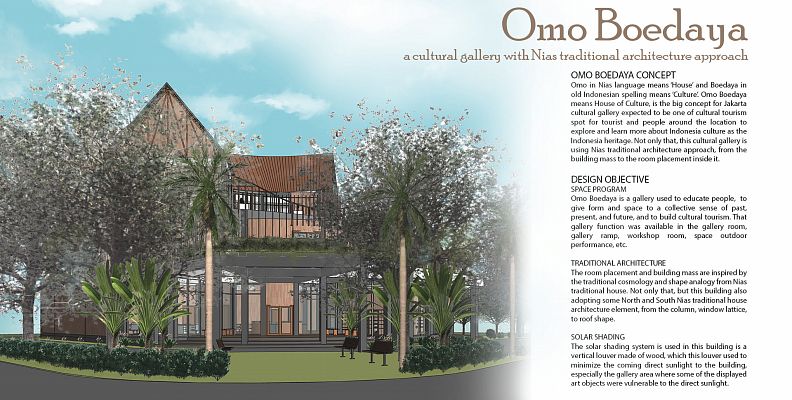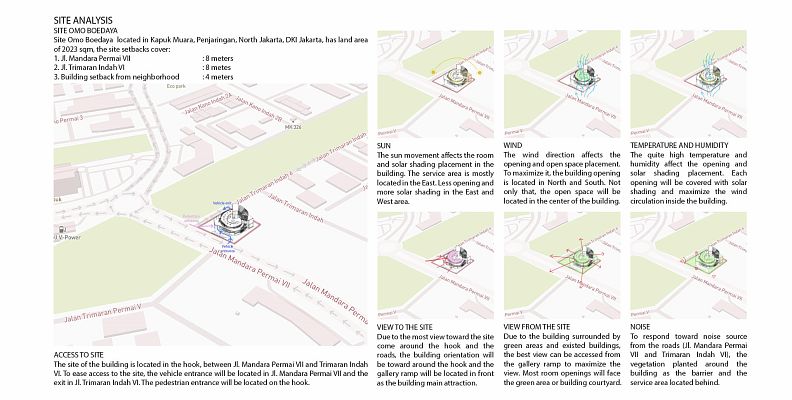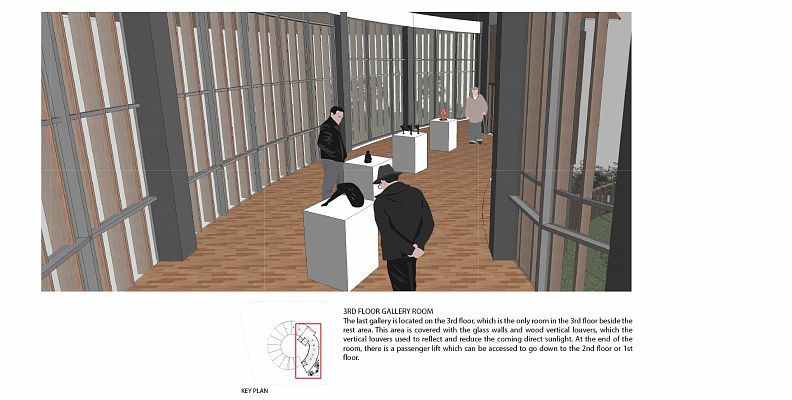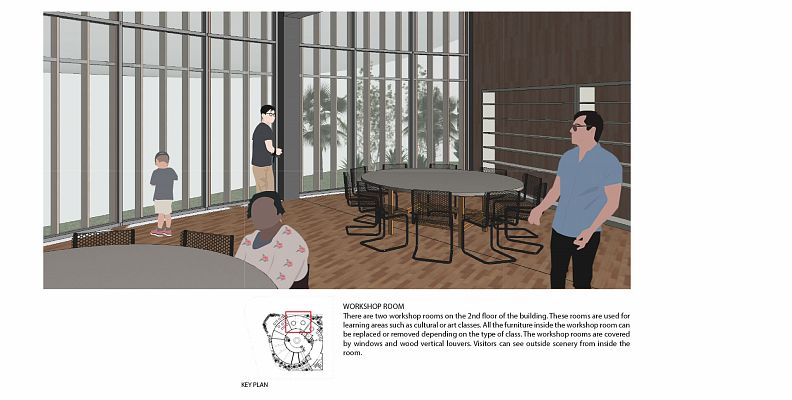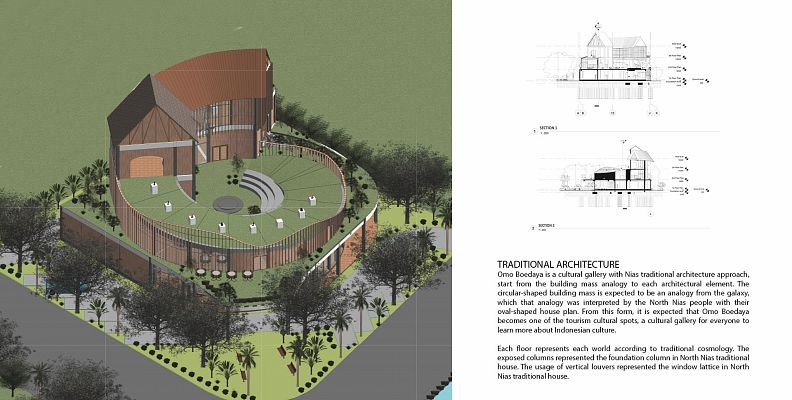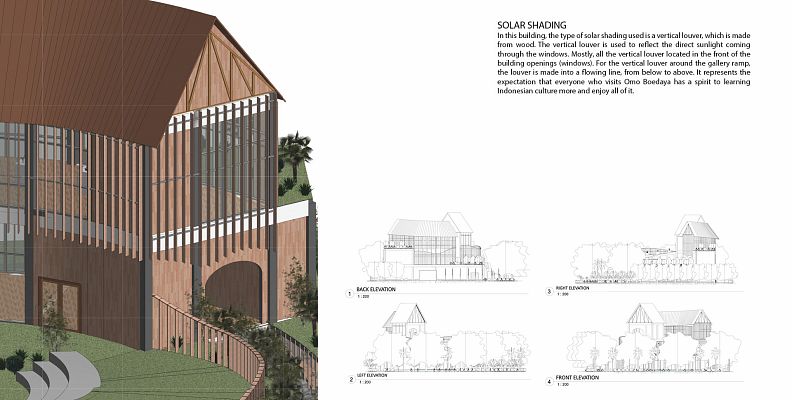Omo Boedaya

Project idea
Indonesia has various cultures spread from Sabang to Merauke. Each culture has great potential, but it has not been maximized used, and developed. Many tourists, foreign and domestic tourists, still do not know about it. Therefore, it is necessary to have a place to showcase the local culture and drive the local economy. This cultural gallery is needed to solve those problems.
This cultural gallery is located in Kapuk Muara, North Jakarta, Indonesia. Based on the origins of the words, Omo in Nias language means 'House' and Boedaya in old Indonesian spelling means 'Culture'. Therefore, Omo Boedaya means 'House of Culture'. This is the big concept for the Jakarta cultural gallery expected to be one of the cultural tourism spots for tourists and people around the location to explore and learn more about Indonesia culture as the Indonesia heritage. Omo Boedaya is a cultural gallery, which is adopting the Nias culture and Nias traditional architecture approach, start from the building mass to the room placement inside it.
Project description
There are three main area categories in this building, namely exhibit area, retail area, and service area. The exhibit area is an area to exhibit or introduce art objects and culture. The retail area is an area that generates income for the building and local people. Last, the service area is an area that supports the building operations. Due to the limited space area, the green area is merged with the exhibit area (gallery ramp and outdoor performance).
The traditional architecture that implements into this building is Nias traditional architecture. The circular-shaped building mass is expected to be an analogy from the galaxy, which that analogy was interpreted by the North Nias people with their oval-shaped house plan. Other, the exposed columns represented the foundation column in North Nias traditional house. Not only that each floor represents each world according to Nias people's traditional cosmology. Due to the climate condition in the site location, the building uses vertical louvers as the building facade to minimize all incoming direct sunlight. These vertical louvers also represented the window lattice in North Nias traditional house.
Technical information
This building is using a rigid frame structure system. The building structure uses concrete for the columns and beams, and stainless steel for the roof. For the building facade, the building is using wooden vertical louvers to minimize all incoming direct sunlight coming inside the room.
